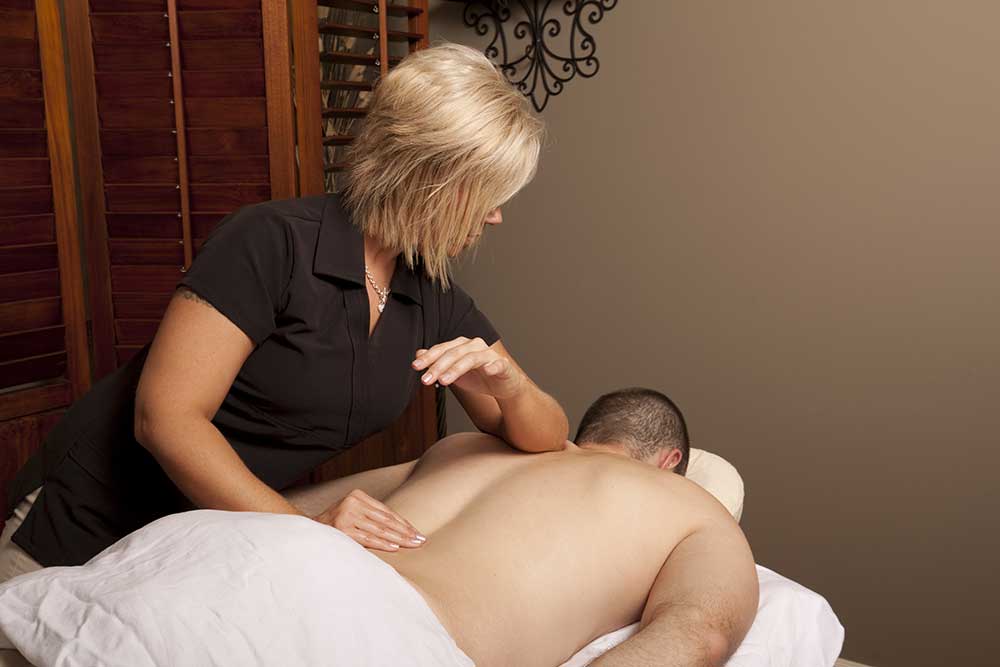Disclaimer: The information on our website is provided for general information purposes only. We make no representations or warranties of any kind, express or implied, about the completeness, accuracy, reliability, suitability or availability with respect to the website or the information contained on our website for any purpose. Any reliance on such information is therefore strictly at your own risk and we are not liable for any damages or losses arising out of or resulting from your reliance on any information contained on our website.
A massage therapist plays a crucial role in holistic healthcare. In fact, they specialize in the art and science of healing through touch. Additionally, they skillfully alleviate stress, promote relaxation, and enhance circulation by expertly massaging and manipulating soft muscle tissues. Beyond providing immediate relief from pain, massage therapists are instrumental in the rehabilitation of injuries to aid in recovery. Next, watch a video to learn more about what a massage therapist does.
How to Become a Massage Therapist
To become a massage therapist, an associate’s degree is usually preferred. Their coursework includes physiology, anatomy, pathology, ethics and body and motion mechanics. To become certified and be licensed in your state and up to 500 hours of hands-on training may be required.
Job Description of a Massage Therapist

A massage therapist helps clients through therapeutic massage to the joints and soft tissue muscles of the body. They are known to help relieve pain, rehabilitate injuries, improve poor circulation, and reduce stress. They also develop a course of action to aid in the healing of the injury or problem area based on the collected information and keep records of all progress or adjustments to the treatment through massage therapy.
He or she would identify specific areas of the body to apply hand and finger pressure. They evaluate a patient’s muscle strength, function, and joint ability, range of motion and condition of soft tissue, in order to give them information and assistance about helpful techniques, such as, stretching, rehabilitative exercises, postural improvement and/or relaxation.
A massage therapist would consult other health care professionals, like, chiropractors, physicians, psychologists or physiotherapists to aid in a patient’s successful treatment and give the client a referral, if necessary, to a specialized health professional. Tools are also a part of the trade. These professionals use may use balance beams or boards, rockers, bolsters and hydrotherapy equipment for their treatment.
Along with the technical skills of the job, massage therapist must be great communicators and listen attentively. They must also be physically able to perform their job and this requires strength, arm-hand steadiness, manual dexterity and trunk strength in this occupation. A massage therapist can be found working in private homes, offices, hospitals, spas and fitness centers.
Massage Therapist Career Video Transcript
Whether a patient calls for a relaxing treat or help to recover from an injury, massage therapists provide an important part of their wellness care. While massage is popular now due to the natural health movement and interest in prevention, massage therapy has its roots in ancient health care practices.
Massage therapists massage and knead patients’ soft tissues to treat medical conditions, injuries, or to maintain health. Using their knowledge of basic anatomy, they may assess range of motion and tissue condition to determine the best techniques to use. Talking with patients beforehand about their symptoms is as important as maintaining communication throughout the massage and keeping health records afterward. Massage therapists learn particular techniques, like sports massage, reflexology, or deep tissue massage. They may work for themselves, in a rehabilitation practice, a massage clinic, at a spa, or even for a sports team.
Massage therapists must typically complete a training program, typically between 500-1000 hours of study, to develop these specialized skills. Most states also have licensure and practice requirements. Becoming a massage therapist can be the first step in a health care career. Many health care providers understand the benefits of massage, and include these services in their treatment plans. Whichever setting these professionals choose, their skills are a welcome addition to their patients’ care.
Article Citations
Bureau of Labor Statistics, U.S. Department of Labor, Occupational Outlook Handbook, Massage Therapists.
National Center for O*NET Development. 31-9011.00. O*NET OnLine.

